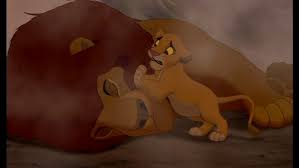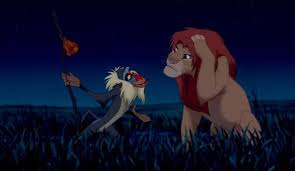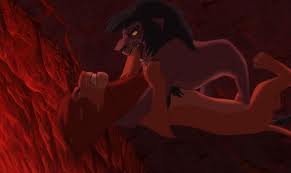Tuesday, November 18, 2014
Siddhartha Recurring Themes
Over the course of Siddhartha, Hermann Hesse shows the theme of teaching/learning through cyclical juxtaposition . Siddhartha has many teachers over the course of the book, this quote is talking about one of his teachers (The Buddha) and his teaching. Hesse writes “the Sublime One spoke, preaching the four basic principles ,
preaching the eightfold path. Patiently he trod the familiar path of his
doctrine, of the examples, the repetitions"(26). While this quote does no specifically adress Siddhartha's past teachings it references by using phrases such as "familar path," or, "the repetitions." Many times earlier in the book Siddhartha has been the receiver of teachings and it is emphasized in this quote. Later in the book, after Siddhartha realizes he no longer desires any teaching, Hesse writes about Siddhartha's state. Hesse says,"Part of him was no longer present; the desire to have teachers and hear
doctrine"(33). The quote shows that Siddhartha has broken the cycle of new teachers and teachings with the phrase, " Part of him was no longer present; the desire to have teachers and hear doctrine." Throughout Siddhartha, Hesse shows Siddhartha going through a cycle of teachers with juxtaposition until Siddhartha breaks the cycle willfully.

 Throughout Siddhartha, repetition, used by Hermann Hesse, depicts the recurring theme questions and anwers. Siddhartha repeatedly questions himself on multiple occasions. Siddhartha says, "What
is meditation? What is abandonment of the body? What is fasting? What is the
holding of breath?” (14). In this quote alone Siddhartha asks 4 seperate questions over the course of 4 sentences, "What is meditation? What is abandonment of the body? What is fasting? What is the holding of breath?," The quote shows how repetition is used with questioning to solidify the theme of questioning. Later in the book, Siddhartha feels as if he has answered some questions and again it is presented with repetition. Siddhartha says, “I was afraid of myself, I was fleeing from myself, I was seeking
Brahman, Atman, I wished to destroy myself to get away from myself, in order to
find the unknown innermost, the nucleus of all things…” (32). Siddhartha makes multiple statements in a row adressing his former questions, “I was afraid of myself, I was fleeing from myself..." Hesse depicts the theme of answers with repetition throughout Siddhartha.
Throughout Siddhartha, repetition, used by Hermann Hesse, depicts the recurring theme questions and anwers. Siddhartha repeatedly questions himself on multiple occasions. Siddhartha says, "What
is meditation? What is abandonment of the body? What is fasting? What is the
holding of breath?” (14). In this quote alone Siddhartha asks 4 seperate questions over the course of 4 sentences, "What is meditation? What is abandonment of the body? What is fasting? What is the holding of breath?," The quote shows how repetition is used with questioning to solidify the theme of questioning. Later in the book, Siddhartha feels as if he has answered some questions and again it is presented with repetition. Siddhartha says, “I was afraid of myself, I was fleeing from myself, I was seeking
Brahman, Atman, I wished to destroy myself to get away from myself, in order to
find the unknown innermost, the nucleus of all things…” (32). Siddhartha makes multiple statements in a row adressing his former questions, “I was afraid of myself, I was fleeing from myself..." Hesse depicts the theme of answers with repetition throughout Siddhartha.
Tuesday, November 4, 2014
The Power of the Mind
The thoughts in one's brain is reality. In my experiences in life I've discovered that many physical things that translate to thoughts, like pain, can be contolled. One of the many times when I sprained my ankle horribly I realized I consciously felt no pain simply because I chose to think I felt no pain. Despite being physically maimed and aware of it, I knew that pain was just a reaction, a signal nerves in my body sent to my brain that was disregarded. Thought is the only lens with which people can sense physical things."Thought is real; physical is the illusion". The idea of "physical is the illusion" is very true for animals, like ourselves, because physical things are not what we sense. We sense physical things through the filter of our mind. Thought is reality because it is all we sense, physical is the illusion because it just influences thought.
Tuesday, October 21, 2014
Canto V Paragraphs. Before and After Revisions.
Canto V Tone Paragraph
Dante’s
cruel diction fulfills Dante’s purpose of making the reader scared of and
not-wanting to go to Circle Two of Hell. When Dante approaches the second
circle he can begin to hear and feel the wickedness; He says,” I can hear the
notes of agony In sad crescendo beginning to reach my ear; Now I am where the
noise of lamentation Comes at me in blasts of sorrow” (5:24-27). In using
expressions as malicious as “I can hear the notes of agony in sad crescendo,”
and,” Noise of lamentation comes at me in blasts of sorrow” the noise and scene
is vividly imagined by the reader to be incredibly sinister. Later in the canto
constant tempest in the second circle is described by Dante. Dante writes,” The
hurricane of Hell in perpetual motion Sweeping the ravaged spirits as it rends,
Twists, and torments them. Drives as if to land, They reach the ruin: groaning,
tears, laments” (5:30-34). Phrases like, “Sweeping the ravaged spirits as it
rends, twists, and torments them,” invoke feelings of pain in the reader by
being so brutally descriptive. By using
grim and pain-invoking diction in Canto 5, Dante makes the reader want to avoid
ever going to Hell and its second circle.
Canto V Tone Paragraph Revised
Dante’s
cruel diction fulfills Dante’s purpose of making the reader terrified of and
not-wanting to go to Circle Two of Hell. When Dante approaches the second
circle he begins to hear and feel the wickedness. Dante says,” I can hear the
notes of agony In sad crescendo beginning to reach my ear; Now I am where the
noise of lamentation Comes at me in blasts of sorrow” (5:24-27). Dante’s point
in using expressions like “I can hear the notes of agony in sad crescendo,”
and,” Noise of lamentation comes at me in blasts of sorrow” is so the noise and
scene is vividly imagined by the reader to be incredibly sinister and horrid so the reader will try to never go there. Later in the
canto Dante describes the constant tempest in the Second Circle of Hell. Dante
writes,” The hurricane of Hell in perpetual motion sweeping the ravaged spirits
as it rends, Twists, and torments them. Drives as if to land, they reach the
ruin: groaning, tears, laments” (5:30-34). Dante’s purpose in using malicious
phrases like, “Sweeping the ravaged spirits as it rends, twists, and torments
them,” is to invoke feelings of pain in the reader by being so brutally
descriptive. By using grim and
pain-invoking diction in Canto 5, Dante makes the reader want to avoid ever
going to Hell and its second circle.
Tuesday, September 23, 2014
Connection of Cambell to Lion King
The concept of the physical deed in battle being the climax that Campbell articulates reflects The Lion King accurately. The ordeal in the Lion King is the fight between the hero (Simba) and Scar, the antagonist. "There are two types of deed. One act is the physical deed, in which the hero performs a courageous act in battle or saves a life. The other kind is the spiritual deed, in which the hero learns to experience the supernormal range of human life and then comes back with a message." (Campbell152). The quote is about the kinds of deeds that are commonly performed that are considered heroic. Simba's fight with Scar where he acts courageously to defeat him and subsequently rights the wrongs that happened to the kingdom and complete his adventure is a great example of a courageous act in battle that is considered heroic. It's heroic because Simba deed accomplished something for his kingdom which is bigger than himself. The ordeal in The Lion King between Simba and Scar is a good illustration of Campbell's idea of a courageous act in battle being heroic.
Tuesday, September 16, 2014
The Lion King Hero's Journey
The Lion King has a clear hero's journey.
Ordinary world:
When Simba is born and all the roaming around the kingdom. When he is hanging around his father and dealing with king ordeals. And when he and Nala are exploring the dark place. Everything leading up to the call
Ordinary world:
When Simba is born and all the roaming around the kingdom. When he is hanging around his father and dealing with king ordeals. And when he and Nala are exploring the dark place. Everything leading up to the call
Call to adventure: Mufasa’s death, Scar taking over Pride Rock. Simba is left to come to terms with putting his father in a situation where he died(implicit), and He has to reclaim his throne.
Mufasa’s death, Scar taking over Pride Rock. Simba is left to come to terms with putting his father in a situation where he died(implicit), and He has to reclaim his throne.
Tests, allies, and enemies;  After the call Simba meets Timone and Pumba. He grows up, learns many things about being independent and strong, and eventually reunites with Nala and she tells him about his enemy Scar and what has come of the kingdom. Later he will also have the support of Rafiki.
After the call Simba meets Timone and Pumba. He grows up, learns many things about being independent and strong, and eventually reunites with Nala and she tells him about his enemy Scar and what has come of the kingdom. Later he will also have the support of Rafiki.
Refusal to call: When Nala tells him what he needs to do, and go back to Pride Rock. Simba refuses because of the guilt of his father’s death.
When Nala tells him what he needs to do, and go back to Pride Rock. Simba refuses because of the guilt of his father’s death.
Meeting the Mentor: He meets Rafiki and Rafiki proceeds to show him what he must do.
He meets Rafiki and Rafiki proceeds to show him what he must do.
Crossing the threshold:  After being greeted by the ghost of his father, and being taught and tested by Rafiki he accepts that he must go face his past guilt, and he must reclaim his throne from Scar.
After being greeted by the ghost of his father, and being taught and tested by Rafiki he accepts that he must go face his past guilt, and he must reclaim his throne from Scar.
Approaching the inmost cave:  When Nala, Simba, Timone, and Pumba come to see what the kingdom has become, It darkens.
When Nala, Simba, Timone, and Pumba come to see what the kingdom has become, It darkens.
The ordeal: Simba comes to Scar and his mother. He gives Scar an ultimatum. He must confront the past. He tells his pride his responsibility in the death of his father. Scar talks of how he kills Mufasa. He makes Scar admit he killed Mufasa. His allies and he then confront the hyena army. Simba confronts Scar face-to-face. He tells Scar to run. Scar and Simba then engage in combat. The hyenas then kill Scar.
Simba comes to Scar and his mother. He gives Scar an ultimatum. He must confront the past. He tells his pride his responsibility in the death of his father. Scar talks of how he kills Mufasa. He makes Scar admit he killed Mufasa. His allies and he then confront the hyena army. Simba confronts Scar face-to-face. He tells Scar to run. Scar and Simba then engage in combat. The hyenas then kill Scar.
Ressurection/rebirth:  Simba after the victory, and having come to terms with the death of his father reclaims the kingdom and rules over the kingdom well
Simba after the victory, and having come to terms with the death of his father reclaims the kingdom and rules over the kingdom well
The road back: Simba must reclaim the throne and rule over the kingdom.
Simba must reclaim the throne and rule over the kingdom.
Return with the elixir: Simba is at peace with the events. He also is now able to make the kingdom of Pride Rock return to its former glory.
Simba is at peace with the events. He also is now able to make the kingdom of Pride Rock return to its former glory.
Tuesday, September 9, 2014
Modern Day Heroes
Heroes today differ a lot from heroes of legend. In myths and stories heroes follow a formula where the same steps of a journey almost always happen. Now , in the modern world the only consistencies with the formula are the call to adventure, the first threshold, and the ordeal itself. "Eddie Hamilton didn't hesitate when he found out a nearby neighbor's house was on fire and three children were trapped inside." In Georgia a man saves three kids from a fire ; He is a hero but the steps that he took are not as clearly defined, or documented as that of tall tales. When Hamilton saw that fire he knew what had to be done, this was his call to adventure.
The crossing of the threshold and the ordeal are key to being a hero. Crossing the threshold involves making the choice of doing the heroic act and the heroic act of itself is the ordeal. Hamilton talks about going from looking onto a fire to a heroic act, "They were at the window screaming when I knocked it out. I just told them to back up. I knocked it out and got them out." The quote depicts the exact moment when Hamilton crossed the threshold of being a normal person to being the hero that saves lives. Every hero crosses the threshold of leaving personal duties behind to do something for a cause greater than oneself. Hamilton goes on to describe details of the ordeal itself "I jumped in the window and crawled across the floor until I found him and drug him to the window." The quote shows the ordeal of the burning house and the act of saving kids from said house. The ordeal is what the journey leads up to, the purpose of the hero.
A hero is plainly someone who does something for the good of something bigger than oneself. The steps leading of a hero can differ despite there being a near foolproof "Heroes Journey" for legends involving heroes. Most all heroes will have to have a calling to the adventure or cause, make the decision to heed the call(crossing the threshold), and have the ordeal or confrontation of making an impact helping the cause. Heroes are timeless, people who dedicate themselves to helping something bigger than themselves will always be heroes.
Friday, August 29, 2014
Practice Post
My first day of school met my expectations pretty accurately. It was novel to see some of my friends that I had not seen over the summer. The novelty and any fun was soon gone when the the monotony of school set in. Some classes were more fun than others. I had some good friends in some classes but unfortunately sometimes "learning" in school is just dumb.
Subscribe to:
Comments (Atom)
